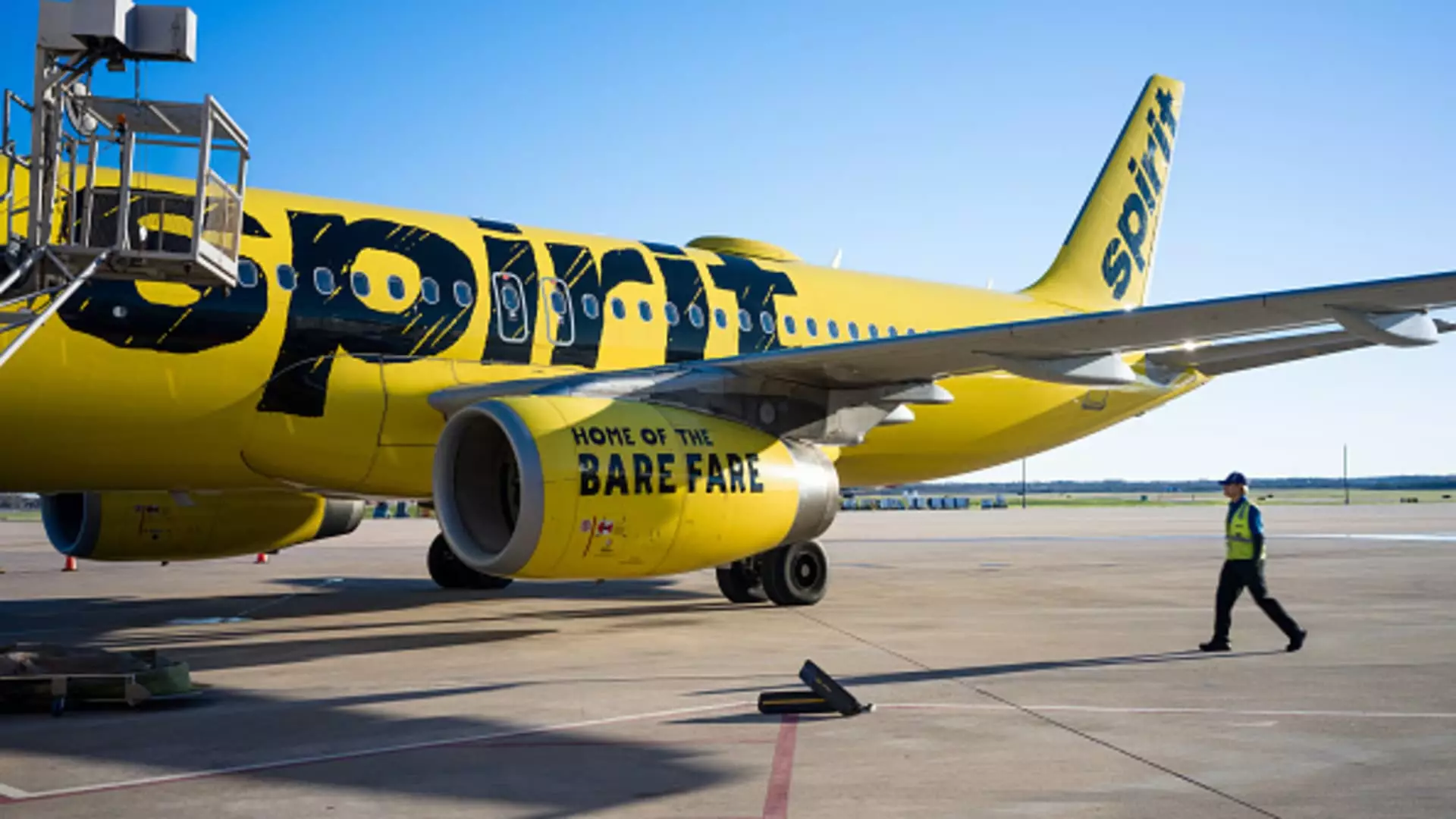Spirit Airlines recently communicated a significant development in its ongoing financial strife by reaching an agreement with its credit card processor to extend a debt refinancing deadline to December. This extension is critical given that the original deadline loomed just hours away, indicating a manic urgency typical of a company under financial duress. Earlier this week, Spirit withdrew the full $300 million available to them from their revolving credit facility, showcasing a desperate attempt to maintain liquidity amidst their turbulent financial landscape. With expectations to retain over $1 billion in liquidity by year’s end, the airline appears to be attempting to stabilize, albeit temporarily, in an industry that has faced crippling pressures post-pandemic.
In its latest report, Spirit indicated active discussions with holders of its senior secured notes due for maturity in 2025 and 2026. This conversation is pivotal, as it reflects the airline’s acknowledgment of its precarious situation, which necessitates proactive engagement with investors who hold significant stakes in its financial health. Such negotiations reveal the broader context of the airline’s strategy to restructure and perhaps alleviate some of its looming debts. However, the frequency of these extensions and the consistently bad news could signal deep, systemic issues within the company, rather than just short-term financial hurdles.
Unfortunately for Spirit, these strategic maneuvers have yet to translate into operational success, as evidenced by the company’s stock performance, which closed at a new low of less than $1.50 per share. This decline represents a staggering drop of over 90% this year alone, exposing the airline’s significant failure to attract investor confidence. Furthermore, operational setbacks, including the grounding of numerous planes due to a critical engine recall from Pratt & Whitney, signify deeper operational vulnerabilities that the airline must address. Such challenges are compounded by a troubling decrease in expected bookings, which underscores the difficulties Spirit faces in returning to pre-pandemic levels of service and profitability.
Adding to its woes, Spirit Airlines saw the collapse of its planned acquisition by JetBlue Airways, a move blocked by a federal judge due to antitrust concerns. This development not only hinders Spirit’s recovery strategies but also raises questions about its competitive viability moving forward. Without the safety net that a merger might have provided, Spirit is now left to navigate its financial crisis independently, amplifying fears of a potential bankruptcy filing, as indicated by recent reports.
Spirit Airlines finds itself entangled in a web of debts, operational challenges, and lost opportunities. The airline’s attempts to secure financial breathing room may be merely delaying the inevitable if underlying issues remain unaddressed. As the company continues to confront its financial and operational hurdles, the upcoming months will be critical in determining its survival in a highly competitive and evolving airline industry. Stakeholders and investors are keenly watching, as the outcomes of current negotiations and operational shifts will shape the future trajectory of this beleaguered airline.

